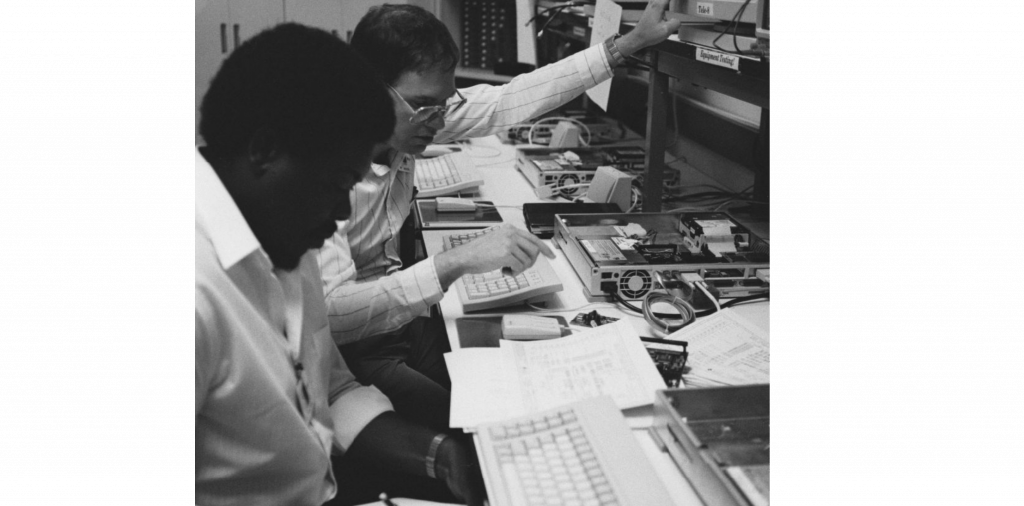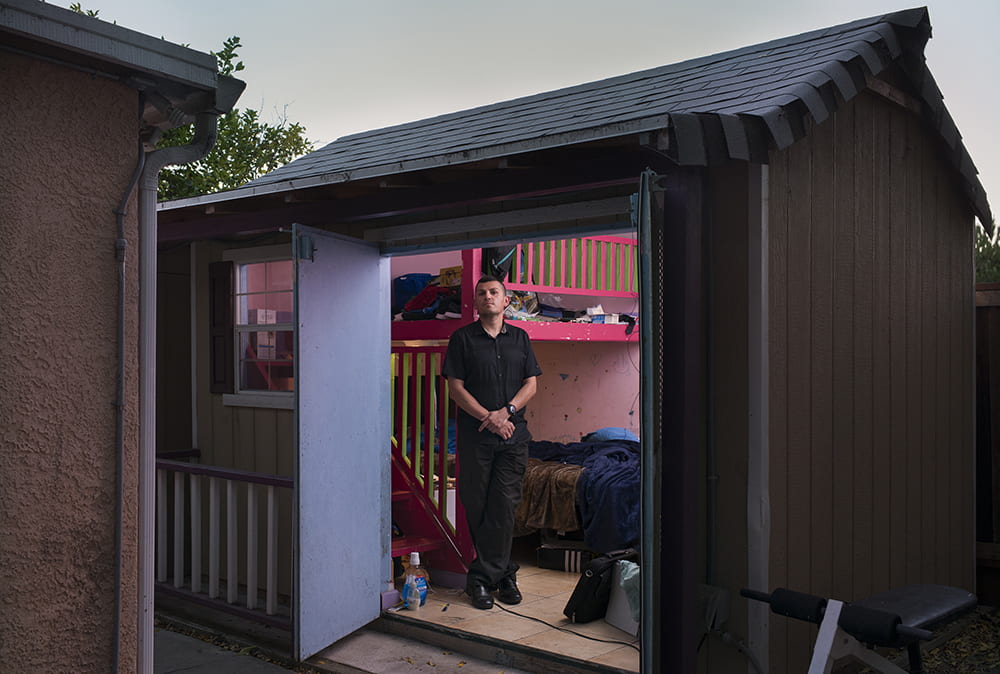By Joel Suarez
How capitalism’s recent history is judged depends on where you start in time. From the vantage point of the late 1990s, it was a triumph. Strong wage and GDP growth, rapidly globalizing trade, and, most intoxicatingly, the ascent of new technologies in telecommunications gave many the sense that capital was sending us into a new era of prosperity where, as the saying then went, “rising tides would lift all boats.” As naïve as it sounds now, the progress was real, if uneven and short-lived. The view a decade later, of course, would be quite different. From that standpoint, the late 1990s would rightly be remembered as merely the byproduct of dollar-depreciation and a debt-fueled asset bubble. We overcame that bubble through easy credit and mortgage securitization pumping up an even bigger asset bubble that would wreak havoc worldwide beginning in 2007. Amid the fallout of the financial crisis, the optimism encapsulated by the idea of rising tides disappeared. This was no time for metaphors. Something tangible was needed. The constant refrain then, as now, was: we don’t make stuff anymore.

In one sense, this is undeniable. There is something weightless about production in the now-matured “new economy.” This economy deals in data, “knowledge,” financial instruments and transactions, and promises of frictionless futures by way of apps. Cars and clothes, toys and tablets—these tangible things have seemingly been left for the machines and the global proletariat to produce. It’s an on odd picture of American economic life, one with an abundance of entrepreneurs and consumers, but, apparently, no workers. They belong in the past, the corpse of which can be found dotting abandoned factories across the Midwest. Indeed, by now columns by coastal reporters parachuting into the Rustbelt to encounter survivors of deindustrialization have become a cottage industry. The tales might be overly familiar, but that doesn’t make the reality any less horrid. Deaths by alcoholism, suicide, or drug overdoses in regions plagued by chronic unemployment have produced what was previously unthinkable: declining life expectancy in the world’s wealthiest nation.
Yet despite all this despair, somehow the U.S. is awash with capital. If we don’t make stuff anymore, why? The global currency reserve role of the dollar in the world economy is one answer, of course. The speculative frenzy backstopped by the Federal Reserve—the grim alternative to which appears to be higher interest rates and higher unemployment—is another. But there is some actual investment going on. Where is that money headed and what does it do? Much of it chases liquid assets, seeking quick returns based on value fluctuations, rather than fixed capital that can both employ more people and increase productivity. Relatively little of current capital flows increase the productivity of service sector workers that constitute vast majority of the workforce, particularly in the low wage ranks of the health care, education, hospitality, and retail industries where people do things rather than make them. These colossal industries suffer from low profits, low investment, low wages, and low productivity growth. Their supplanting of the more dynamic manufacturing sector in the U.S. economy goes a long way in explaining the economic stagnation and rising inequality that has cursed the U.S. since the 1970s. But for all the warranted despondency over the shape of American capitalism, in the eyes of much of the world, the U.S. continues to possess the “crown jewel of capitalism” that causes investors to throw mountains of money at sometimes transparently stupid things: Silicon Valley.
+ + +
The allure of the Valley is simple. It thrives on utopianism. With plentiful smarts and massive sums of money, the place relentlessly promotes its capacities to change the world and perhaps even what lies beyond it. The main protagonists of the region’s self-promotion are undoubtedly CEOs and company founders. These are the supposed visionaries that attract billions of investors’ dollars to not just create and sell products but also dreams. Dreams alone, however, are never enough. At some point someone must deliver something real. And that delivery is the product of workers—tech workers and other workers that enable them to do the work that they do. To understand the peculiar style of capitalism that has emerged from the region, it helps to understand not just its ideas and products, but the people that actually make them.

Tech workers certainly “make things.” But the difference between software and steel isn’t just economic. Building cars and steel beams produced particular kinds of culture: the clothes, the bars, the churches, the language, the families, the unions. How do the things tech workers make, in a sense, make them? How do changes in the nature of work change the normative visions of those experiencing them? How does the nature of power in the workplace shape that consciousness of those subjected to and deploying it?
A recent rich literature on technology and work—popular, academic, and somewhere in-between—has wrestled with these questions. Those like Martin Ford’s Rise of the Robots and, more famously, Andrew Yang’s The War on Normal People have warned of automation’s march making a dystopian, workless future. They echo mid-twentieth century fears espoused by the likes of Kurt Vonnegut, Hannah Arendt, James Baldwin, and Martin Luther King Jr. that likewise feared that automation would render humans obsolete, leading to mass unemployment. More empirically grounded recent work by Aaron Benanav and Jason Smith, on the other hand, have stressed broader economic dynamics, rather than technological advances, as leading causes of the problem with work today. To them, it is not rapid technological development but rather slow growth, low productivity growth, and underinvestment in fixed capital that has led to rising unemployment, underemployment, and the casualization of formerly good jobs.
The explosion of this kind of literature suggests something has happened to both technology and work to urge serious study of it. Yet for all their breadth and rigor, few of these studies have attempted to explore the experience of work from the perspective of workers themselves. In this respect, few books have done as good a job of delving into these kinds of questions of tech work as Voices from the Valley by Ben Tarnoff, himself a tech worker and co-founder of Logic magazine, and Moira Weigel, a historian and fellow co-founder of Logic. What distinguishes their work from others is their refusal to adopt much of broader analytical apparatus to their book. They were wise enough to approach the topic with a light touch. They allowed workers to speak for themselves through oral history. The value of this approach, both intellectually and politically, is a simple but radical truth, or perhaps an attempted willing of truth, that those who are burdened by labor are well-equipped to understand and transform it. Unlike the countless stories of Rustbelt misery, which are rightly taken as tales of self-evident economic failures, Tarnoff and Weigel’s decision to focus on Silicon Valley workers gives us a unique view of the idea and experience of work in the one area where economic success is supposed to be self-evident.
Oral histories of workers, of course, have a rich tradition. From the Federal Writers’ Project that captured the oral histories of former slaves to Michael Honey’s oral histories of black workers under Jim Crow, this methodology and genre has helped capture the rich language with which historical subjects tell their stories and create meaning. Yet today such oral histories are increasingly the domain of academic presses or historical archives, lying largely out of sight of most reading publics. And this is precisely what makes Voices from the Valley so unique—this is a popular oral history of subjects that loom large in the popular imagination but have been underexplored in oral history.
Quite explicitly, Tarnoff and Weigel are working in the tradition of the legendary Studs Terkel, who subtitled his epic 1974 oral history of workers People Talk About What They Do All Day and How They Feel About What They Do and is given the generous nod in Tarnoff and Weigel’s own subtitle: Tech Workers Talk About What They Do—and How They Do It. There’s real purpose in working in Terkel’s tradition. It’s perhaps more intuitive to marvel at the gadgets and greenbacks, at the seductive power of imagination produced by the Valley. But Tarnoff and Weigel are after something different, something more fundamental that can’t be captured by statistics or simple tales of heroic inventions. “I was constantly astonished by the extraordinary dreams of ordinary people,” Terkel reflected on his own worker oral history collection. “No matter how bewildering the times, no matter how dissembling the official language, those we call ordinary are aware of a sense of personal worth—or more often lack of it—in the work they do.” Through workers’ stories, Tarnoff and Weigel provide a window into the inner life of postindustrial political economy.
The book is slim but the range of the cast of characters that people Voices from the Valley is vast. We hear about startup founders and technical writers, cafeteria workers and massage therapists. Above all, what Tarnoff and Weigel enable us to see is that capital’s crown jewel exemplifies the problem with capital. Consider the startup founder, a “sacred figure in the Valley.” One anonymous founder from a modest family in Texas describes his journey to an elite college that one can probably safely assume is Stanford. Since his freshman year he would watch as tech companies would lavish students with gifts and stretch limos in hopes of enticing the next great innovator to join their firm. The allure was strong, but the school had developed a culture that believed “that building a business was the best way to make the world a better place.” Student debt, however, made him risk averse, so he took a job with a big tech company upon graduation, earning a salary greater than either of his parents. This high income came with a deep sense of regret: several of his former classmates had founded startups that were soon bought out for ungodly amounts of money.
The regret proved so intense that he soon quit his secure, well-paying job to start his own company with an old college friend. More than a chase for fast money, he was determined to really devote himself to self-directed work on what he describes as “interesting” and “important” problems. Soon enough, he received offers to buy out his company. While on the surface this appears a classic tale of American success, this was, in fact, the beginning of the end of meaningful work for him. Whereas in the past venture capital would buy up and fund startups, today it’s increasingly common for tech giants themselves to buy startups. The actual products and talents of startups are of secondary importance to the acquirers—the point is simply to stifle any potential competition.
Once acquired, this founder quickly confronted the reality that he was no longer working on interesting or important problems, but rather simply trying to maximize users’ time spent on a given application to increase revenue. The end result of this process took him to a politics far removed from his earlier belief that business was the best way to make the world a better place. Now, instead of identifying as an engineer or founder or innovator, this former-startup founder calls himself a tech worker and increasingly believes his fellow workers and users alike should demand greater control over the company’s decision-making process.
This inkling for workers’ control of the workplace isn’t reserved for former founders-turned employees. One technical writer Tarnoff and Weigel interviewed was fired after getting pregnant and asking the company’s founder about its maternity leave policy. The experience was an education in how class power and patriarchy reinforce one another. “I was so upset at the time,” she recalled, “I signed the paperwork and went home sobbing. I was tired. I was pregnant.” Asked if she sought a lawyer, the technical writer responded: “…the worry when you’re a woman in tech is that if you raise your voice, you’ll get branded as a trouble maker. Tech is actually a small industry. You don’t want to be the woman who’s not easy to work with. I was so scared at that moment that I didn’t do the right thing.” When she commenced the hunt for a new job, she sought out companies that offered remote work. This proved a revelation. Her newfound autonomy enabled her to take her child to doctors’ appointments, to pick up prescriptions, to attend school meetings—to attend to the care work that is indispensable but often invisible and unwaged. With more control over her work, she relished not being under the direct scrutiny of a boss, not having to ask for permission to do the things she needed to keep her child alive and flourishing.
The idea of workers’ control and autonomy, of course, is hardly new. It stems from a long labor political tradition that stretches back centuries. Workplace domination does not mechanically produce these kinds of ideas, but it does create its conditions of possibility. For example, one cook for a tech giant that Tarnoff and Weigel interviewed explained the outlines of his day. He’s up by 5:00 a.m., at work by 6:00 a.m., out by 3:00 p.m., and then the twist: “…everybody’s gotta have two jobs. Myself, I just started a new part-time gig. Most of my coworkers, when they get out at 3:00 p.m., they go to another job and work another shift. With the way traffic is, they have to go straight there. They have to be at their second job at 4:00 or 5:00 p.m. to get that next eight hours in, so they can at least be home before midnight.” For both capital and labor, time is of the essence. Capitalism, fueled by the compulsive need to turn past and present investment into future profits, demands ever-more time of its workers. Time itself becomes a tyrant, and it’s precisely this time-crunch that pushed this cook into politics.

The natural question that looms over the cook’s story is: why does an incredibly successful company that pays its other employees handsomely somehow not find a way to pay its non-technical staff enough to live on? The easy answer is simply because they can. This is how people are valued and the cook is at the bottom of the value chain. On the firm’s terms, this made enough sense, even to the cook. But his point was to change those terms: “Some homies that I work with pulled me aside and said, ‘We want to unionize.’ And then they introduced me to the people from the union. They wanted to make power moves. They wanted to give the workers the power to actually have a voice and make some changes.” And so began the meetings in the parking lot, at homes, and at pizza spots over beers. That was the fun part, but the risks were real. People could lose their jobs and losing a job, for many, meant losing everything—health insurance, housing, and perhaps most abstractly but importantly, a sense of self-worth and purpose. Forming a union, however, created a different purpose of its own. “It’s a really good feeling,” said the cook. “When people actually realize that they are worth more, it’s nice.”
These power moves eventually won him and his coworkers a union contract, but it wasn’t a victory for cooks alone. In fact, other tech workers—those part of the Tech Worker Coalition—joined the cooks in solidarity, going to meetings and even negotiations. The struggle for a union helped break down boundaries between more affluent tech workers and low-wage service workers. What brought tech workers to the kitchen staff was an overlapping struggle. Like the cooks, many of these tech workers weren’t actually employees of tech behemoths, but rather contractors left unprotected by labor and employment law. The increasing casualization of professional workers created the possibility for solidarity with the tech world’s most precarious workers.

These kinds of political struggles can transform workers of all ranks. “In our kitchens,” the cook explained, “the chefs are the bosses and the cooks are the workers. Right away,” after winning union recognition, “the chefs started showing a little more class. They started treating us nicer. Before, most of them treated us like peasants. Honestly. Most of the time they didn’t talk to us. They were just there to discipline us and keep us in line. But when they found out we were going to organize, their bosses were like, ‘hey, y’all better get y’all shit together. Because we don’t need this kind of tension.” Management’s power to hire and fire has a way of producing conformity. Fear of rebellion from below, however, has a way of commanding some respect, however begrudging.
+ + +
These stories collected by Tarnoff and Weigel speak to broader trends in U.S. political economy. They also speak to trends in the oral history of our current political economy, which, in turn, could be read as intellectual histories of workers since the “long downturn” that commenced in the 1970s. Through workers’ own stories and language of longing, workers implicitly and indirectly—though sometimes quite directly—made claims about the idea of work, of what it is and what it isn’t and of what it could be. In their view, work dominated their life, it punished pregnancy, and bored and disempowered them. But work didn’t have to be this way. It could be interesting, important, and controlled by workers.
When Studs Terkel published Working in 1974, the world economy was suddenly thrown into crisis. Harry Maurer, an admirer of Terkel’s, ended the grim decade with an oral history of his own titled, appropriately enough, Not Working, published in 1979. Terkel dazzled readers with fascinating interviews of steelworkers, welders, cabdrivers, and telephone operators. He wrote memorably of “a search…for daily meaning as well as daily bread, for recognition as well as cash, for astonishment rather than torpor; in short, for a sort of life rather than a Monday through Friday sort of dying.” Maurer, on the other hand, treated readers to interviews with public employees laid off due to New York City’s fiscal crisis, a young Native American man whose unemployment led him to attempt suicide, and a 62-year-old man who had worked and been laid off from jobs in coal mining, construction, meat cutting, trucking, and now had “little hope of ever working again.”
What Terkel called the search “for daily meaning” and “daily bread” no doubt continued into the late 1970s when Maurer published his oral history. But this search took on a different tenor at the height of stagflation. “There are many people in this book whose living rooms have turned into prisons without bars,” Maurer wrote, “and others who gleefully feel they have escaped jobs that were jails. There are people who have been broken by years of idleness, and others who have discovered emotional resources that allow them to endure—even, in a way, to triumph.” Work had become almost an abstraction. Its daily tasks and texture erased and replaced by emotion—bitterness and anger for what was done by employers, desperation for a new paycheck, and, less often, exhilaration spurred by the possibility of starting anew.
One finds much of the same affects in a book published more than 30 years after Maurer’s Not Working, this one by D.W. Gibson, also titled Not Working. Instead of stagflation, the setting for Gibson’s oral history of workers was the unemployment fallout of the 2007-8 financial crisis. As in Maurer’s book, Gibson’s oral history described how “routines are obliterated, not enough sleep, too much sleep, too much booze—insurance is skipped, roll the dice and hope for the best. Too much food, not enough food, trying to eat different food.” Yet for all the similarities in the experiences of unemployment collected by Maurer and Gibson, there are also profound differences. Mainly, where “stagflation” marked mass and prolonged unemployment as a confusing and historically unique catastrophe, by the time one hears from Gibson’s unemployed one loses a sense of the provisional nature of economic life.
For some of Gibson’s interviewees, this was only the latest tragedy in a longer-term catastrophe. Mike Nurmela, for instance, hailed from the Bay Area. His grandparents were eastern European immigrants, his father was a carpenter, and his mother “a well-educated secretary.” He was born in 1951 and was “the first one in my family to go to college,” eventually heading into consumer lending for 25 years before working for a host of different companies. One of those companies went under when the dot-com bubble burst. It was the first of what would be several layoffs. By the time Gibson interviewed Mike Nurmela in the wake of the financial crisis, he was on the verge of losing his home even after draining all of his and his wife’s 401K.
One gets a glimpse of economic life after the New Deal order in Mike’s biography. “I’m one of those kids that grew up in that era when you had hope and you had dreams that you could see and touch and reach out for and get. You knew you were going to get it,” said Mike. “It was the middle class dream my generation dreamed about and it doesn’t exist anymore.” This was no lonely lament. This sentiment is widespread and well known to economists. Indeed, one economist, David G. Blanchflower of Dartmouth, recently wrote a book attempting to explain it, aptly titling the volume, once again, Not Working.
Blanchflower shows how official unemployment rates hardly tell the full story of work in the long downturn, a story defined by underemployment, stagnant wages, falling labor market participation, and other grim, if familiar, statistics: drug and alcohol addiction and falling life expectancy. The neoliberal fetish for “labor market flexibility” hasn’t produced more efficiency but rather low wages and, in turn, low productivity. Blanchflower’s solution—full employment through low interest rates and public investment—might be sensible enough but ignores the fact that the levers of economic life lie not only in the hands of those already powerful enough to make policy, but also potentially in those of ordinary people organizing in homes, parking lots, restaurants, offices, and even colleges where ideas and social bonds are forged and reconstituted.
The power to pull work from its pitiful station—that is, to transform economic life as we know it—does not and cannot lie solely in the hands of economists and policymakers. What the pandemic economy has exposed is a change, however slight, in the ideological terrain of American capitalism. Pulled out of the workforce by newfound caregiving demands, health concerns, and relatively generous unemployment insurance benefits (at least by American standards), many former low-wage workers have had time to reflect on just how hurried and horrendous their work life used to be. Some of them are holding out for something better. Business owners call this a labor shortage. Workers might call this a tiny glimpse of labor power. “A particular ideological chain becomes a site of struggle,” Stuart Hall once wrote, “not only when people try to displace, rupture or contest it by supplanting it with some wholly new alternative set of terms, but also when they interrupt the ideological field and try to transform its meaning by changing or rearticulating its associations.” When workers change the understanding of work from something one simply does to something that dominates them, then work becomes the site of struggle, the potential site for liberation. But to do that, they have to make things again. They have to make power moves.
Joel Suarez is an Assistant Professor at the CUNY School of Labor and Urban Studies and a Fellow-In-Residence at Harvard University’s Edmond J. Safra Center for Ethics. He is working on a book on the relationship between work and ideas of freedom in U.S. history.
Featured Image: Janet Delaney, “Privately-Owned Public Space, LinkedIn Building,” 2016, from Delaney’s ongoing project, SoMa Now.



